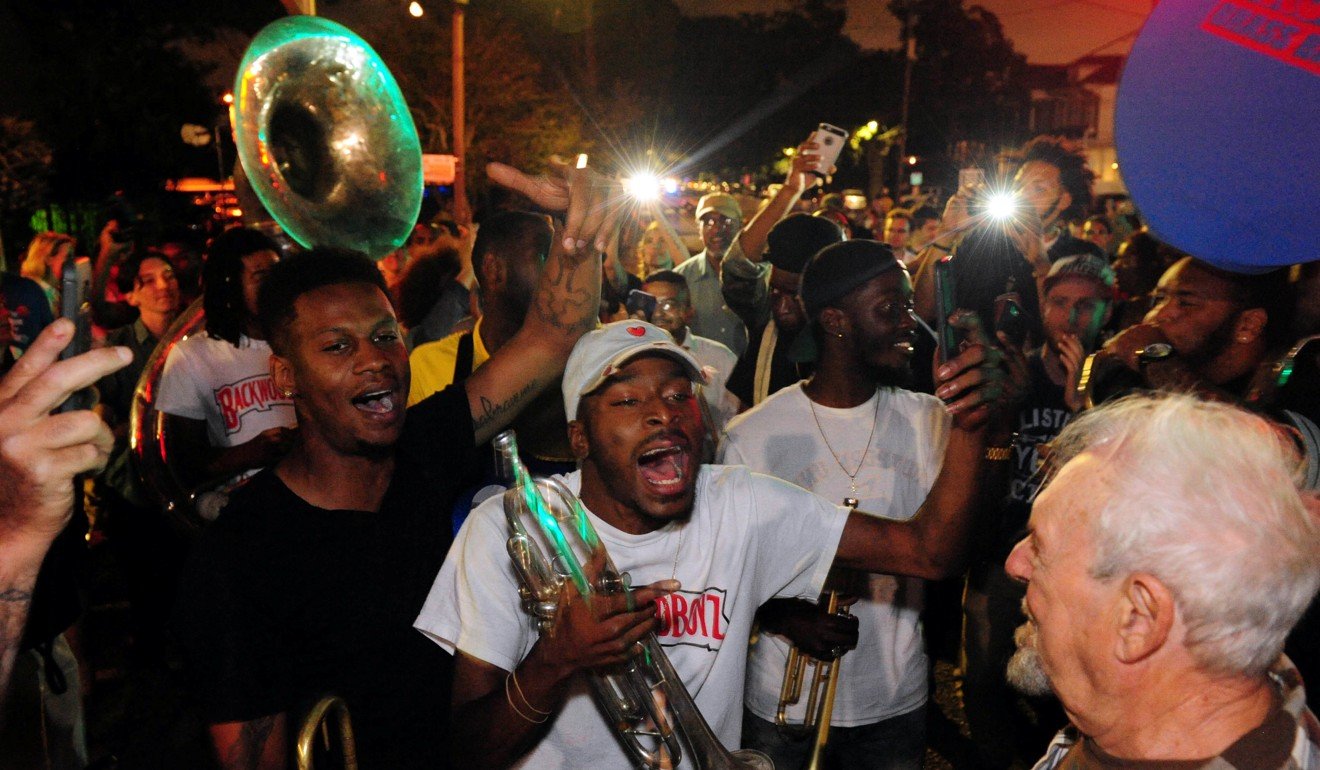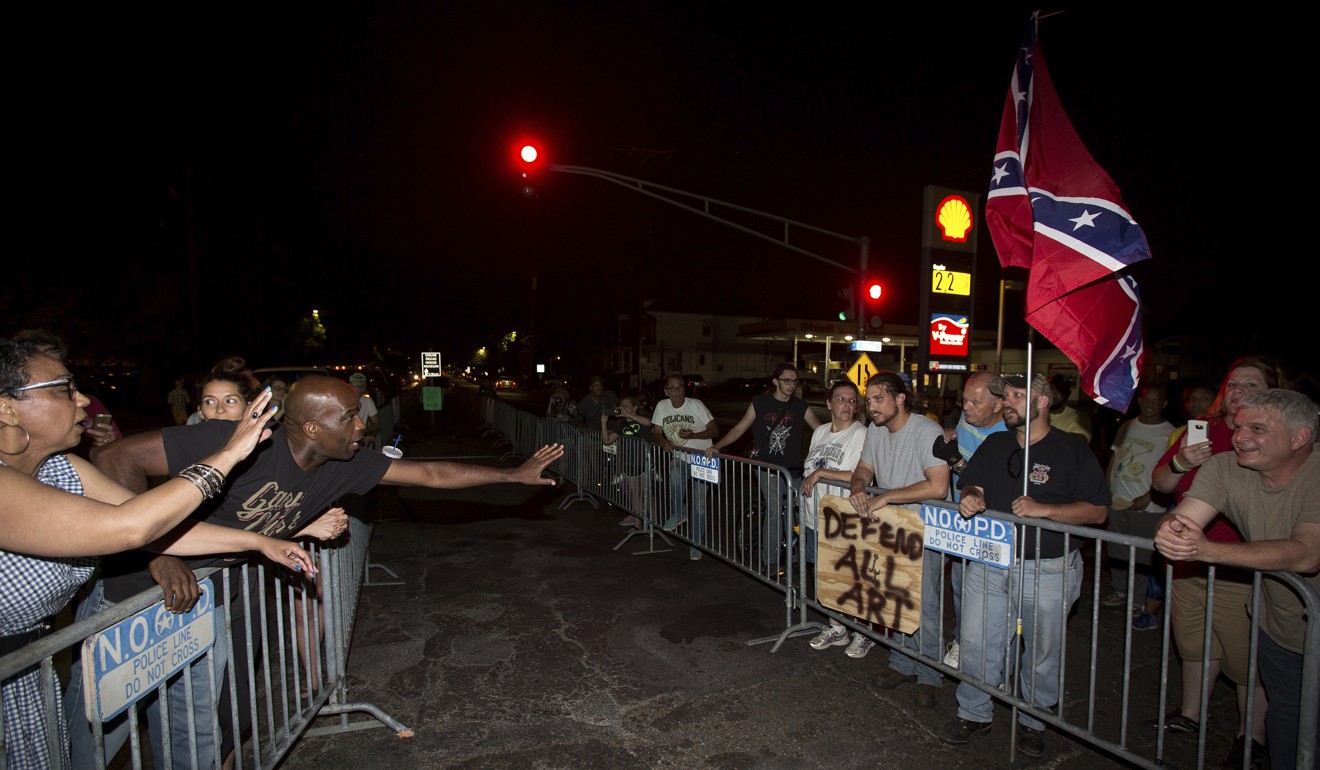
New Orleans takes down statue symbolising racism for black Americans
Mostly African-American city viewed the statues as honouring slavery and segregation as race cleaves white and black Americans

Workers in New Orleans took down a Confederate monument to Gen. P.G.T. Beauregard early Wednesday as onlookers watched from lawn chairs, while defiant statue supporters waved Confederate battle flags and opponents celebrated.
It was the third of four such monuments to come down under a plan proposed by Mayor Mitch Landrieu and approved by the City Council more than a year ago. As with two earlier removals, it happened under cover of darkness. Work began soon after sundown and news outlets showed the statue being lifted off its base shortly after 3 am.
The city already had taken down a statue of the Confederacy’s only president and a memorial to a white rebellion against a biracial Reconstruction-era government in the city.
“Today we take another step in defining our City not by our past but by our bright future,” New Orleans Mayor Mitch Landrieu said in a news release. “While we must honour our history, we will not allow the Confederacy to be put on a pedestal in the heart of New Orleans.”
Landrieu called for the monuments’ removal in the lingering emotional aftermath of the 2015 massacre of nine black parishioners at a South Carolina church. The killer, Dylann Roof, was an avowed racist who brandished Confederate battle flags in photos, recharging the debate over whether Confederate emblems represent racism or an honourable heritage.

The removal process has been anything but easy.
The City Council voted 6-1 in 2015 to remove the monuments after a succession of contentious public meetings where impassioned supporters and opponents heckled each other. Contractors involved in the removal process have been threatened, and the work stalled for months as statue supporters looked in vain to the courts for help. Workers removing the first two memorials generally wore bulletproof vests, helmets and face coverings to shield their identities as the work took place well after midnight to minimise attention.
More recently, lawmakers in the Louisiana House backed a proposal aimed at keeping cities from removing Confederate monuments in a controversial vote Monday that black lawmakers derided as “divisive” and “offensive.”

Workers at the Beauregard removal Tuesday night also covered their faces and wore helmets but the atmosphere appeared slightly more low-key, with work starting in the evening after sunset. Local media showed images of monument supporters waving Confederate battle flags while those supporting their removal stood nearby. But the situation was largely peaceful.
Across a bayou from where the monument stands, some observers sat in lawn chairs to watch the proceedings, and a brass band celebrating the removal showed up after midnight, news outlets reported. People in kayaks and canoes could be seen at times watching workers prepare the statue for removal.
Among the witnesses was Terence Blanchard, a celebrated New Orleans trumpet player who said he headed for the scene with his wife and two daughters when he learned the statue was coming down.
“It’s a sign that the world is changing,” said Blanchard, an African-American who attended a high school near the Beauregard monument.

Monument supporters said the works are a way to remember and honour history.
“Mayor Landrieu’s actions are an insult to New Orleanians who came before us — the veterans, widows, parents, children, and citizens — who donated their personal money to build and place these monuments where they stand to honour the memory of their fallen family members,” said Pierre McGraw, President of the Monumental Task Committee which has been advocating keeping the monuments in place.
But for many in this majority black city, the monuments pay honour to a history of slavery and segregation, and they want them down.
“I’ve never looked at them as a source of pride,” Blanchard said. “It’s always made me feel as if they were put there by people who don’t respect us.”